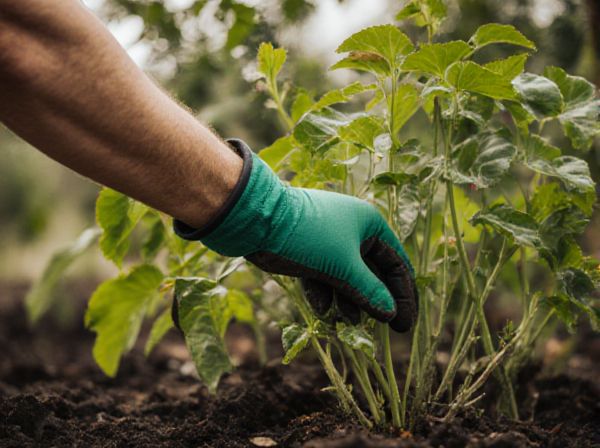
Understory Planting vs Canopy Planting Illustration
Understory planting involves cultivating shade-tolerant plants beneath the forest canopy, benefiting from filtered light and protection from harsh weather. Canopy planting focuses on establishing taller trees that form the upper layer of the forest, providing essential shade and microclimate regulation. Choosing between understory and canopy planting impacts biodiversity, light availability, and overall ecosystem health.
Table of Comparison
| Feature | Understory Planting | Canopy Planting |
|---|---|---|
| Light Exposure | Filtered, low light under tree canopy | Direct, full or partial sunlight above trees |
| Plant Types | Shade-tolerant shrubs, ferns, groundcovers | Shade-intolerant trees, sun-loving plants |
| Soil Conditions | Moist, rich organic matter from leaf litter | Variable, may require amendments for shade tolerance |
| Moisture Retention | Higher moisture due to shade and mulch | Lower moisture, more evaporation |
| Wildlife Habitat | Supports understory wildlife, insects, birds | Supports canopy-dwelling species |
| Growth Rate | Slower, adapted to low light | Faster, with more sunlight |
| Maintenance | Moderate, requires pruning and leaf management | Higher, due to exposure and potential pests |
Understanding Understory and Canopy Layers in Shade Gardening
Understory planting involves selecting shade-tolerant species that thrive beneath the canopy layer, benefiting from filtered light and cooler microclimates. Canopy planting focuses on taller trees and shrubs that form the uppermost layer, creating the essential shade environment for understory plants. Understanding the interaction between these layers helps optimize garden design, promoting biodiversity and improving plant health in shaded areas.
Key Differences Between Understory and Canopy Planting
Understory planting involves growing shade-tolerant plants beneath the forest canopy, optimizing growth in low light conditions and enhancing soil moisture retention. Canopy planting focuses on establishing taller tree species that form the upper layer, significantly influencing microclimates and providing extensive shade coverage. Key differences include light exposure levels, water competition, and ecological roles, with understory plants adapted to filtered sunlight while canopy trees require full sun for optimal development.
Benefits of Understory Planting in Shaded Gardens
Understory planting enhances biodiversity by supporting shade-tolerant species that thrive beneath the canopy, promoting a multilayered garden structure. It improves soil health through ground cover that reduces erosion and retains moisture, crucial for shaded environments. This method also creates microhabitats for beneficial insects and wildlife, increasing ecosystem resilience in shaded gardens.
Advantages of Canopy Planting for Shade Creation
Canopy planting enhances shade creation by establishing a robust overhead layer that effectively reduces sunlight penetration, improving microclimate conditions. It supports higher biodiversity by providing habitat and protection for understory species, promoting ecosystem stability. This approach also mitigates soil erosion and conserves moisture, benefiting long-term landscape health and resilience.
Ideal Plant Choices for Understory Gardens
Ideal plant choices for understory gardens include shade-tolerant species such as ferns, hostas, and astilbes that thrive in low-light conditions beneath tree canopies. These plants typically have broad leaves to maximize photosynthesis in filtered sunlight and prefer moist, well-drained soil rich in organic matter. Incorporating native shrubs like azaleas and dogwoods can enhance biodiversity while providing seasonal interest under the canopy layer.
Best Trees for Effective Canopy Planting
Effective canopy planting requires selecting tree species with broad, dense crowns such as oaks (Quercus spp.), maples (Acer spp.), and beeches (Fagus spp.), which provide extensive shade and support understory biodiversity. These trees have deep root systems that stabilize soil and improve air quality while their large canopies create microhabitats essential for shade-tolerant understory plants. Choosing native species adapted to local climate enhances canopy resilience and maximizes ecological benefits in shaded landscapes.
Light and Microclimate Impacts: Understory vs Canopy
Understory planting thrives in low-light conditions beneath the canopy, creating a cooler microclimate with higher humidity and reduced temperature fluctuations. Canopy planting captures more direct sunlight, influencing light availability and increasing temperature variability in the microclimate below. These differences in light exposure and microclimate profoundly affect plant growth, species diversity, and ecosystem functions in shaded environments.
Maintenance Requirements for Understory vs Canopy Plantings
Understory planting typically requires less intensive maintenance compared to canopy planting due to the smaller size and slower growth rate of understory plants. Canopy plantings demand more frequent pruning, pest management, and watering to support larger tree structures and extensive root systems. Proper maintenance of understory plants involves monitoring light availability and soil moisture to ensure healthy growth with minimal intervention.
Biodiversity Considerations in Shade Garden Layers
Understory planting enhances biodiversity by supporting shade-tolerant species that thrive beneath the canopy, contributing to a multi-layered habitat essential for diverse insects and wildlife. Canopy planting, involving taller trees, forms the primary shade layer and influences microclimates, affecting species composition and overall ecosystem health. Balancing both layers promotes a richer biodiversity by creating varied niches that support a wide range of flora and fauna in shaded garden environments.
Designing Multi-Layered Shade Gardens for Maximum Impact
Understory planting thrives beneath mature canopy trees, utilizing shade-tolerant species like ferns and hostas to create lush, textural ground layers that enhance biodiversity and soil health. Canopy planting involves selecting tall trees with broad crowns, such as oaks or maples, to establish the primary shade structure and regulate microclimates. Designing multi-layered shade gardens integrates these layers systematically, combining canopy, understory, shrub, and ground cover plants to optimize light diffusion, support diverse habitats, and achieve visual depth and seasonal interest.
Understory Planting vs Canopy Planting Infographic

 gardendif.com
gardendif.com